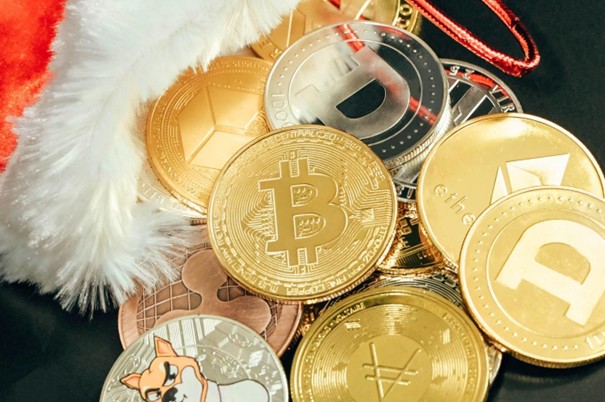The XRP token is among the first cryptocurrencies never developed. It was created to offer instant and inexpensive cross -border transactions. The Ledger XRP and the XRP token were launched in 2012, and since then, XRP has turned into one of the most important cryptocurrencies, allowing easy, fast and secure transactions worldwide. XRP is often associated with the name Ripple, with the company whose services include the Ripple consensus book, the Ripple transaction protocol and the Ripple network.
Ripple is a company that uses XRP tokens in its operations, offering rapid, effective and reliable solutions. Over the years, XRP has experienced many ups and downs, but it has managed to overcome even the moments that could have a negative impact on its evolution. Before adding this cryptocurrency to your wallet, you must stay up to date with the XRP News today And the features that make this digital part stand out from other cryptocurrencies. This is exactly what we will discover in this article, so continue to read.
What are the unique XRP characteristics that bring it out?
Large Book System
Cryptocurrencies have a big book to keep track of their movements. Each cryptocurrency has a single consensual mechanism to validate its transactions, which differs from one to the other. Thanks to these consensus mechanisms, the big book can confirm the legitimacy of a transaction and add new parts.
The LEDGER XRP uses the Connes XRPL, or federated consensus, which allows cheaper and faster transactions. The advantage of this compared to other examples is that it consumes less energy and allows cheaper and faster transactions. In addition, XRP has a unique list of nodes (UNTH) with confidence validators.
Use case
Among the most popular use cases for XRP, it allows participants around the world to make international payments in a profitable way, reliably and quickly. This makes XRP adapted in many areas, especially for businesses, institutions and governments. Apart from that, you can use XRP for daily payments, the liquidity of cryptography and access to the main services of Ripple. XRP can also be considered an investment opportunity and maintained in virtual wallets until its value appreciates even more.
A comparison between XRP and Bitcoin: key differences
Transaction speed and costs
One of the most important differences between XRP and Bitcoin lies in their transaction speed and costs. Bitcoin (BTC) has a transaction time of about 10 minutes. However, in times of high demand, Bitcoin transaction times can take even more time, which also results in an increase in costs.
On the other hand, transactions with XRP are generally completed within 3 to 5 seconds. The costs are very low compared to bitcoin, and they remain quite constant regardless of the market network. XRP is suitable for international payments due to its great profitability and speed.
Platform control
Bitcoin is a cryptocurrency that emphasizes decentralization. Control is in the hands of node operators and a global community of minors. Bitcoin does not belong to any authority or central government, which removes the need for intermediaries.
XRP, on the other hand, was launched by Ripplelabs, which holds a substantial part of the tokens and influences the use and development of the network. Compared to Bitcoin, XRP is less decentralized.
Accessibility
Between the two, Bitcoin has been more widely adopted. There are many reasons, but among the most popular, there is its first advantage, its generalized media coverage and its significant market capitalization. When people think of cryptocurrencies, they most likely associate bitcoin with this landscape, which proves its important role in the field of cryptography.
On the other hand, even if XRP launched a few years after Bitcoin, this cryptocurrency is not as popular as BTC. The legal legal affair had negative consequences for its evolution. However, XRP has the potential to increase more in the future, in particular because it can benefit from partnerships with financial institutions.
A comparison between Ethereum and XRP: main differences
Consensus mechanisms
Ethereum works with a mechanism for proof of proof of implementation (POS), where users must set up a quantity of Ethereum tokens to be able to add new blocks and validate transactions. This is an improved alternative to the proof of work model (POW), which has been convicted of its enormous electricity consumption. XRP is different from other digital parts in the sense that it uses a federal Byzantine agreement mechanism (FBA) which operates using a single nodes list with authorized listeners who can check transactions without involving processes such as mining or implementation.
Tokenomics
Ethereum has an unlimited supply, which makes this digital token an inflationary asset. Despite this feature, Ethereum still maintains high value because it encourages the use of decentralized applications and other interesting services that work thanks to Blockchain technology.
In comparison with Ethereum, XRP has a limited offer of 100 billion tokens, and the total number of parts has already been operated. Ripple Labs is gradually publishing them, with the aim of publishing 1 billion digital documents each month. However, with 55 billion tokens preserved in the whole, this process will last longer, because we must also consider the unsold digital parts which return to the whole.
Scalability
Ethereum can only treat 15-30 transactions per second, which is one of the gaps in the platform. The layer two solutions that run over Ethereum transactions and treatment outside the chain before finally writing them on Ethereum blockchain could help improve its transaction speed. On the other hand, XRP is very fast and can treat around 1,500 transactions per second. This makes the big XRP book among the fastest blockchains in terms of payments treatment.
The bottom line
XRP is indeed an interesting digital currency in the kingdom of cryptography. It was among the first digital pieces and managed to become an important cryptocurrency that drew the attention of a large audience. Compared to other virtual parts, XRP has advantages and disadvantages, which shows that each crypto is unique and can meet individual and special needs.
Publication views: 128




